X. Yu
GNCformer Enhanced Self-attention for Automatic Speech Recognition
May 22, 2023
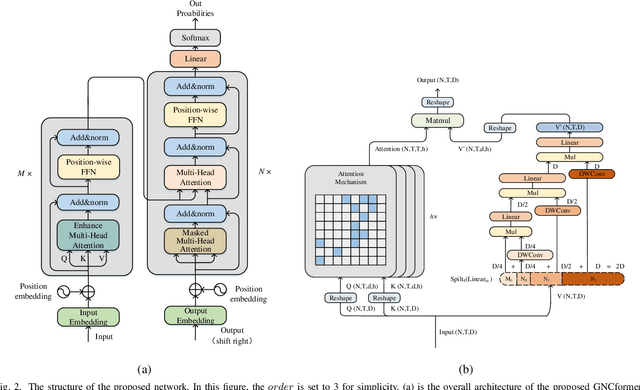
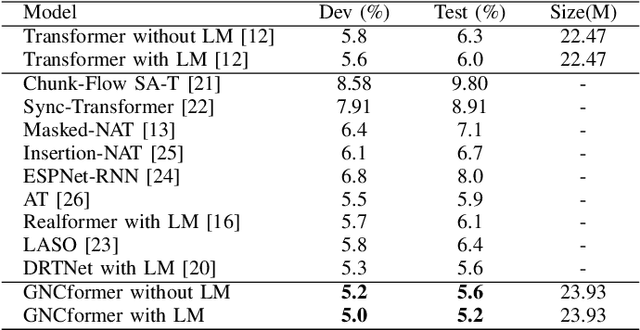
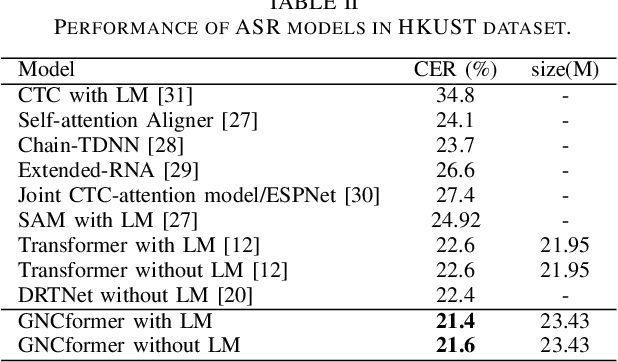
Abstract:In this paper,an Enhanced Self-Attention (ESA) mechanism has been put forward for robust feature extraction.The proposed ESA is integrated with the recursive gated convolution and self-attention mechanism.In particular, the former is used to capture multi-order feature interaction and the latter is for global feature extraction.In addition, the location of interest that is suitable for inserting the ESA is also worth being explored.In this paper, the ESA is embedded into the encoder layer of the Transformer network for automatic speech recognition (ASR) tasks, and this newly proposed model is named GNCformer. The effectiveness of the GNCformer has been validated using two datasets, that are Aishell-1 and HKUST.Experimental results show that, compared with the Transformer network,0.8%CER,and 1.2%CER improvement for these two mentioned datasets, respectively, can be achieved.It is worth mentioning that only 1.4M additional parameters have been involved in our proposed GNCformer.
Graphene-based Distributed 3D Sensing Electrodes for Mapping Spatiotemporal Auricular Physiological Signals
Jul 10, 2021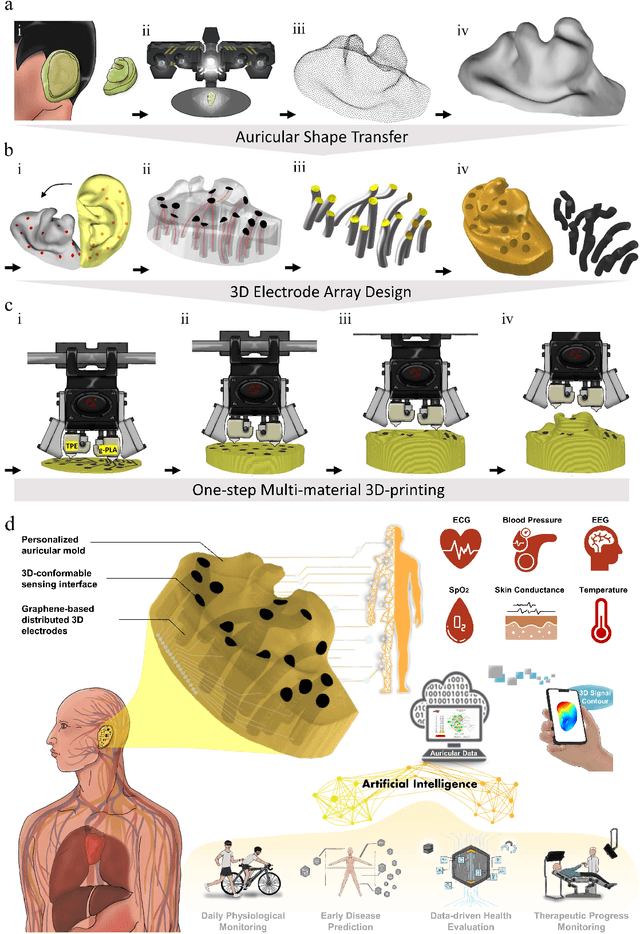
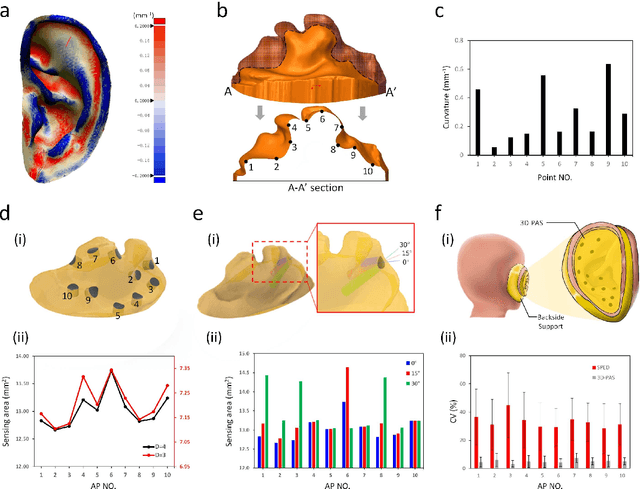

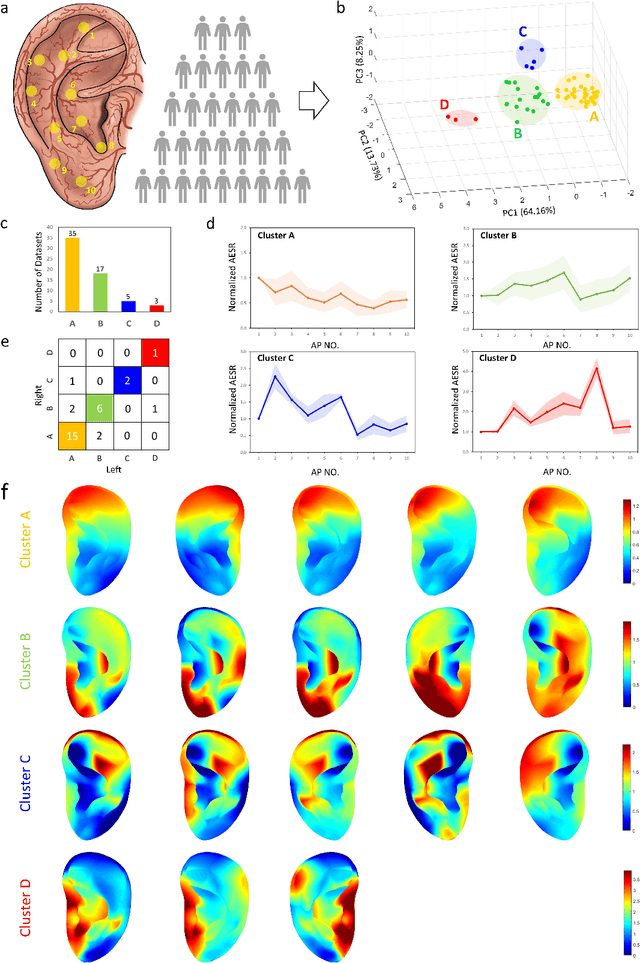
Abstract:Underneath the ear skin there are richly branching vascular and neural networks that ultimately connecting to our heart and brain. Hence, the three-dimensional (3D) mapping of auricular electrophysiological signals could provide a new perspective for biomedical studies such as diagnosis of cardiovascular diseases and neurological disorders. However, it is still extremely challenging for current sensing techniques to cover the entire ultra-curved auricle. Here, we report a graphene-based ear-conformable sensing device with embedded and distributed 3D electrodes which enable full-auricle physiological monitoring. The sensing device, which incorporates programable 3D electrode thread array and personalized auricular mold, has 3D-conformable sensing interfaces with curved auricular skin, and was developed using one-step multi-material 3D-printing process. As a proof-of-concept, spatiotemporal auricular electrical skin resistance (AESR) mapping was demonstrated. For the first time, 3D AESR contours were generated and human subject-specific AESR distributions among a population were observed. From the data of 17 volunteers, the auricular region-specific AESR changes after cycling exercise were observed in 98% of the tests and were validated via machine learning techniques. Correlations of AESR with heart rate and blood pressure were also studied using statistical analysis. This 3D electronic platform and AESR-based new biometrical findings show promising biomedical applications.
 Add to Chrome
Add to Chrome Add to Firefox
Add to Firefox Add to Edge
Add to Edge